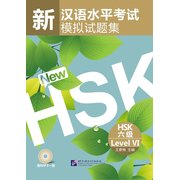- 出版社: 中国人民大学出版社; 第2版 (2015年6月1日)
- 外文书名: IELTS Reading
- 平装: 399页
- 语种: 简体中文, 英语
- 开本: 16
- ISBN: 9787300212487
- 条形码: 9787300212487
- 商品尺寸: 25.8 x 18.4 x 2 cm
- 商品重量: 739 g
- 品牌: 中国人民大学出版社
Details
基本信息
编辑推荐
改版,其实是件无可奈何的事情。因为刚刚出版的《剑桥雅思全真模拟试题集10》中选用了与上一版《雅思阅读真经5》中相同考点文章,所以,不得不将其删掉,补充新的文章,出版《雅思阅读真经5(剑10版)》。
《雅思阅读真经5》是中国雅思考试官方英国文化处(British Council)认证经典作品。而本书被迫进行改版,也足以证明本书对考点的精准把握。《雅思阅读真经5》自出版之日起,一直到今天,都是整个培训领域真题命中率高的一本阅读书,代表了整个雅思培训行业对于真经教学研究的高水平,代表了测试和训练的完美契合方式。从2004年到现在,不论怎样去还原真题,真经,永远代表最贴近出题原理,而且无可替代的一个品牌。这本书提供给你的不仅仅是真题还原,而是完整的训练方式。通过选择有针对性的训练材料进行分项测试,让考生的阅读能力有实质性飞跃。是的,这就是强悍的真经,可以跟任何一种教学理论相结合的真经,让所有雅思考生感到信赖和骄傲的真经。
作者简介
刘洪波,贵学教育创始人,北京雅思总校校长。年少沉醉于水墨书法,道经音律;后负笈海外,喜两希文化,研习拉丁。归国后投身英语教育事业,培养出大批雅思、托福、四六级、考研英语名师。连续数年赴西部支教,共培训上千名初高中英语教师。著有《英文字根词源精讲》、《最简化雅思写作》、《最快速雅思阅读》、《雅思经典教程》、《雅思基础教程》、《托福词汇精讲》等数十部作品。其留学散文被《海外文摘》、《青年文摘》等众多媒体登载,广为流传,13年将其在澳大利亚留学的传奇经历,集结成集出版了《留学SUPER之路》。其中2004年出版的《雅思阅读真经》是国内第一本以真题题库为蓝本编写的培训教材,考试命中率极高,畅 销海内外,开创了真题机经的教材流派。刘洪波最新力作有《雅思阅读真经总纲》、《雅思阅读真经5》、《剑桥雅思阅读考点词真经(剑9版)》、《剑桥雅思听力考点词真经》等。2007年各大教育媒体将其誉为“雅思教父”;2009年当选“建国60年推动中国教育培训发展功勋人物”;网易年度大选“教育产业十大领军人物”。多次应邀赴剑桥、牛津等大学进行英语教学培训交流研讨。在全国高校巡回演讲数百场,听过其讲座和课程的学员不可数。学员点评其授课风格为:行云流水,旁征博引,激情四射,励志人生。
目录
CHAPTER1Summary单词填写题
核心词汇雅思阅读真题同义词考点
核心词汇雅思阅读真题同义词考点
核心词汇雅思阅读真题同义词考点
核心词汇雅思阅读真题同义词考点
核心词汇雅思阅读真题同义词考点
核心词汇雅思阅读真题同义词考点
核心词汇雅思阅读真题同义词考点
核心词汇雅思阅读真题同义词考点
核心词汇雅思阅读真题同义词考点
核心词汇雅思阅读真题同义词考点
核心词汇雅思阅读真题同义词考点
核心词汇雅思阅读真题同义词考点
核心词汇雅思阅读真题同义词考点
CHAPTER2True/False/NotGiven句子理解判断题
核心词汇雅思阅读真题同义词考点
核心词汇雅思阅读真题同义词考点
核心词汇雅思阅读真题同义词考点
核心词汇雅思阅读真题同义词考点
核心词汇雅思阅读真题同义词考点
核心词汇雅思阅读真题同义词考点
核心词汇雅思阅读真题同义词考点
核心词汇雅思阅读真题同义词考点
核心词汇雅思阅读真题同义词考点
核心词汇雅思阅读真题同义词考点
核心词汇雅思阅读真题同义词考点
核心词汇雅思阅读真题同义词考点
核心词汇雅思阅读真题同义词考点
CHAPTER3ParagraphHeading段落中心思想题
核心词汇雅思阅读真题同义词考点
核心词汇雅思阅读真题同义词考点
核心词汇雅思阅读真题同义词考点
核心词汇雅思阅读真题同义词考点
核心词汇雅思阅读真题同义词考点
核心词汇雅思阅读真题同义词考点
核心词汇雅思阅读真题同义词考点
核心词汇雅思阅读真题同义词考点
CHAPTER4Matching信息匹配题
核心词汇雅思阅读真题同义词考点
核心词汇雅思阅读真题同义词考点
核心词汇雅思阅读真题同义词考点
核心词汇雅思阅读真题同义词考点
核心词汇雅思阅读真题同义词考点
核心词汇雅思阅读真题同义词考点
核心词汇雅思阅读真题同义词考点
核心词汇雅思阅读真题同义词考点
核心词汇雅思阅读真题同义词考点
核心词汇雅思阅读真题同义词考点
核心词汇雅思阅读真题同义词考点
核心词汇雅思阅读真题同义词考点
CHAPTER5MultipleChoice选择题
核心词汇雅思阅读真题同义词考点
核心词汇雅思阅读真题同义词考点
核心词汇雅思阅读真题同义词考点
核心词汇雅思阅读真题同义词考点
CHAPTER6Diagram图表题
核心词汇雅思阅读真题同义词考点
核心词汇雅思阅读真题同义词考点
核心词汇雅思阅读真题同义词考点
核心词汇雅思阅读真题同义词考点
核心词汇雅思阅读真题同义词考点
核心词汇雅思阅读真题同义词考点
CHAPTER7RealTest真题模考
Test19
Reading Passage1 Reading Passage2
Reading Passage3
Test2
Reading Passage1 Reading Passage2
Reading Passage3
APPENDIX附录
附录1AnswerKeys答案
附录22004—2014真题一览表
附录3答疑录
附录4剑桥大学雅思访问记
附录5口碑推荐:“绝世好书”《雅思写作真经总纲》
文摘
Reading Passage
You should spend about 20 minutes on Questions 1–13 which are based on Reading Passage 1 below.
Improving Reading Speed
It is safe to say that almost anyone can double his speed of reading while maintaining equal or even higher comprehension. In other words, anyone can improve the speed with which he gets what he wants from his reading.
The average college student reads between 250 and 350 words per minute on fiction and non-technical materials. A “good” reading speed is around 500 to 700 words per minute, but some people can read 1,000 words per minute or even faster on these materials. What makes the difference? There are three main factors involved in improving reading speed: (1) the desire to improve, (2) the willingness to try new techniques and (3) the motivation to practice.
Learning to read rapidly and well presupposes that you have the necessary vocabulary and comprehension skills. When you have advanced on the reading comprehension materials to a level at which you can understand college-level materials, you will be ready to begin speed reading practice in earnest.
Understanding the role of speed in the reading process is essential. Research has shown a close relation between speed and understanding. For example, in checking progress charts of thousands of individuals taking reading training, it has been found in most cases that an increase in rate has been paralleled by an increase in comprehension, and that where rate has gone down, comprehension has also decreased. Most adults are able to increase their rate of reading considerably and rather quickly without lowering comprehension.
Some of the facts which reduce reading rate:
(a) limited perceptual span i.e., word-by-word reading;
(b) slow perceptual reaction time, i.e., slowness of recognition and response to the material;
(c) vocalisation, including the need to vocalise in order to achieve comprehension;
(d) faulty eye movements, including inaccuracy in placement of the page, in return sweep, in rhythm and regularity of movement, etc.;
(e) regression, both habitual and as associated with habits of concentration
(f) lack of practice in reading, due simply to the fact that the person has read very little and has limited reading interests so that very little reading is practiced in the daily or weekly schedule.
Since these conditions act also to reduce comprehension, increasing the reading rate through eliminating them is likely to result in increased comprehension as well. This is an entirely different matter from simply speeding up the rate of reading without reference to the conditions responsible for the slow rate. In fact, simply speeding the rate, especially through forced acceleration, may actually result, and often does, in making the real reading problem more severe. In addition, forced acceleration may even destroy confidence in ability to read. The obvious solution, then is to increase rate as a part of a total improvement of the whole reading process.
A well planned program prepares for maximum increase in rate by establishing the necessary conditions. Three basic conditions include:
(a) Eliminate the habit of pronouncing words as you read. If you sound out words in your throat or whisper them, you can read slightly only as fast as you can read aloud. You should be able to read most materials at least two or three times faster silently than orally.
(b) Avoid regressing (rereading). The average student reading at 250 words per minute regresses or rereads about 20 times per page. Rereading words and phrases is a habit which will slow your reading speed down to a snail’s pace. Furthermore, the slowest reader usually regresses most frequently. Because he reads slowly, his mind has time to wander and his rereading reflects both his inability to concentrate and his lack of confidence in his comprehension skills.
(c) Develop a wider eye-span. This will help you read more than one word at a glance. Since written material is less meaningful if read word by word, this will help you learn to read by phrases or thought units.
Poor results are inevitable if the reader attempts to use the same rate indiscriminately for all types of material and for all reading purposes. He must learn to adjust his rate to his purpose in reading and to the difficulty of the material he is reading. This ranges from a maximum rate on easy, familiar, interesting material or in reading to gather information on a particular point, to minimal rate on material which is unfamiliar in content and language structure or which must be thoroughly digested. The effective reader adjusts his rate; the ineffective reader uses the same rate for all types of material.
Rate adjustment may be overall adjustment to the article as a whole, or internal adjustment within the article. Overall adjustment establishes the basic rate at which the total article is read; internal adjustment involves the necessary variations in rate for each varied part of the material. As an analogy, you plan to take a 100-mile mountain trip. Since this will be a relatively hard drive with hills, curves, and a mountain pass, you decide to take three hours for the total trip, averaging about 35 miles an hour. This is your overall rate adjustment. However, in actual driving you may slow down to no more than 15 miles per hour on some curves and hills, while speeding up to 50 miles per hour or more on relatively straight and level sections. This is your internal rate adjustment. There is no set rate, therefore, which the good reader follows inflexibly in reading a particular selection, even though he has set himself an overall rate for the total job.
In keeping your reading attack flexible, adjust your rate sensitivity from article to article. It is equally important to adjust your rate within a given article. Practice these techniques until a flexible reading rate becomes second nature to you.
Questions 1–4
Choose the appropriate letters A–D and write them in boxes 1–4 on your answer sheet.
1 Which of the following is not a factor in improving your reading speed?
A willing to try new skills
B motivation to improve
C desire to practice
D hesitate to try new techniques
2 Understanding college level materials is a prerequisite for
A learning to comprehend rapidly.
B having the necessary vocabulary.
C beginning speed reading.
D practicing comprehension skills.
3 For most people
A a decrease in comprehension leads to a decrease in rate.
B a decrease in rate leads to an increase in comprehension.
C an increase in rate leads to an increase in comprehension.
D an increase in rate leads to a decrease in comprehension.
4 Speeding up your reading rate through forced acceleration often results in
A reducing comprehension.
B increasing comprehension.
C increasing your reading problem.
D reducing your reading problem.
Questions 5–9
Complete the table below.
Choose NO MORE THAN THREE WORDS from the passage for each answer.
You may also be interested in the following product(s)
-

初学者之友:工笔禽鸟
£7.95









 Facebook
Facebook Twitter
Twitter Pinterest
Pinterest Google +
Google +